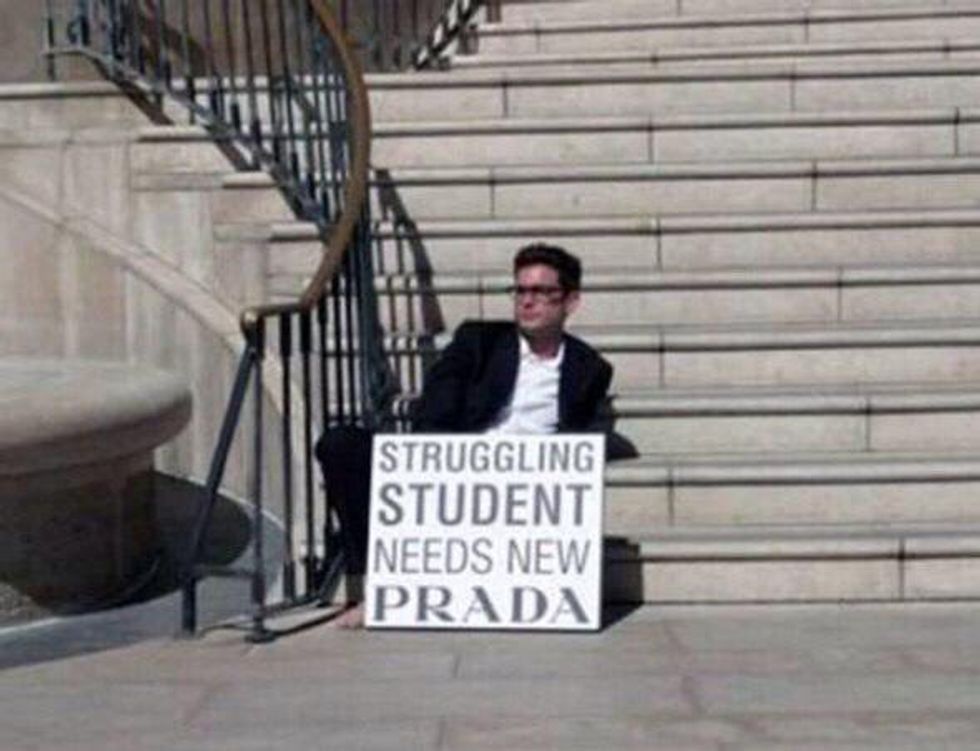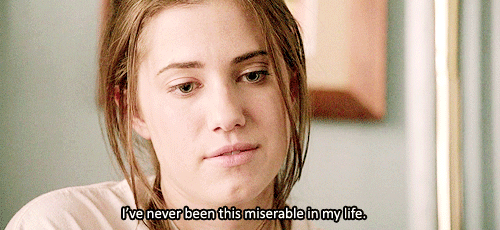In the wake of moving out of my dorm for my upcoming trip abroad, it dawned upon me… I have too many clothes. This is completely and utterly a first world problem, but it is still a problem in matters of packing, traveling, space, and finances. I’ve become a caricature of shopaholic -- an overflowing closet, shoes all over the place and shopping bags building up in my trash can. A joke in my family is me packing light for anything, (a 3-day trip calls for six outfits).
As a fashion enthusiast, I’ve always made reasons to justify for a shopping trip and having three of the same “perfect” grey sweater. I say, "I’m helping the economy," "I have to have this," "It goes with my new pants I got," or my favorite, "It was on sale?!" If you are a shopaholic, you’ve probably uttered these phrases. Whenever it has come time to do laundry, packing, and organizing my closet I always return to the same questions, "Why do I have so many clothes?" and "When the hell did I get this?" Digging deep into my consumerist ways, I’ve found the shopping environment we have to in our society feeds into the ever growing hunger for new.
Fashion brands and trend forecasters propel us what’s in style for the season, our favorite celebrities then wear those styles, it’s trickled into the million online stores we go to, and into our favorite fast fashion stores. Before we know it, we’re online shopping at 2 a.m. purchasing this season’s boyfriend jean or online at H&M purchasing this season’s A-line dress.
Shopping is everywhere and readily available to us whenever we want. We go online shopping on our smartphones while waiting online at Starbucks, surf the web for deals during class, and have fast fashion stores offering lower and lower prices for clothes. We can access fashion whenever we want and end up building an overflowing closet, and for what? Last season’s sweater that we forgot about it? The sparkly pants we swore would wear all the time, but only wore it once for New Year's?
With fast fashion stores and brands picking up trends quicker and making it more available and cheaper for the consumer it creates a false sense of wealth. Going to stores like Forever21 or H&M and finding six different garments for forty dollars or less, is exciting for a consumer. We can look chic at a reasonable price, but buying the cheap, trendy garments are usually poorly made and end up being thrown away. In fact, the whole fast fashion industry is reported to be the second dirtiest industry in the world, with oil companies being first. It is environmentally detrimental: the dyes, the waste, the transportation, and clothes are not biodegradable. With globalization and the constant search for cheap labor in fast fashion conglomerates, human rights are also an issue. As seen in the Joe Fresh factory disaster , there issues of safety for the workers, who are over worked, under paid, and some are children.
Our disposable and instant culture is creating this desire for consumers to constantly want more and more, but at what cost? I’m not saying this in a way to stop shopping or to boycott all fast fashion stores, but to be more conscience of where you are shopping and how much you are spending. Americans can learn something from the French and their shopping ways: buying a few key pieces that are a little more expensive, but can be worn forever. Making your closet less cluttered, and your life a little simpler. I don’t know about you, but I certainly do not want to continue scrambling around my room every morning to find something to wear. Yet, I’m a work in progress.




















































